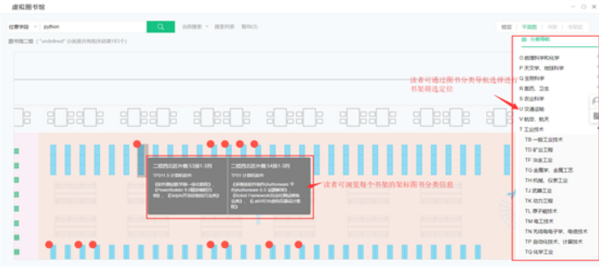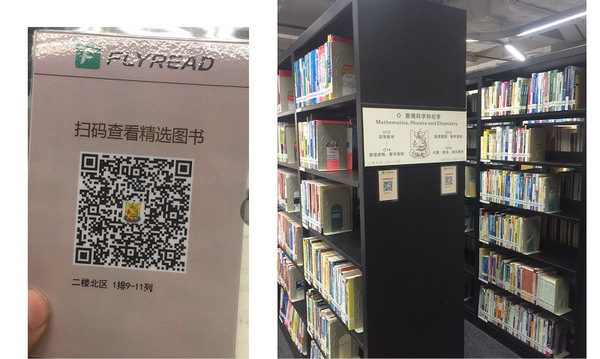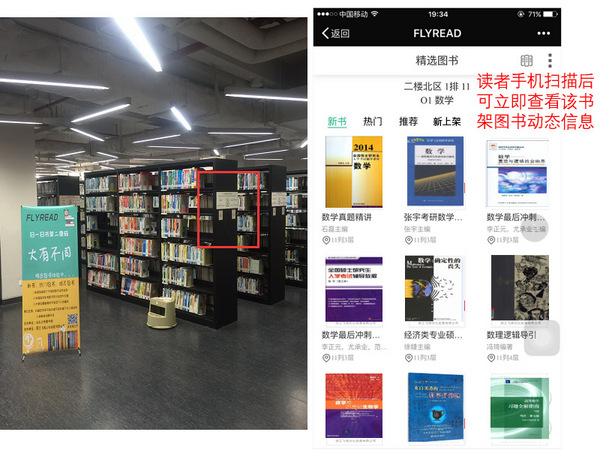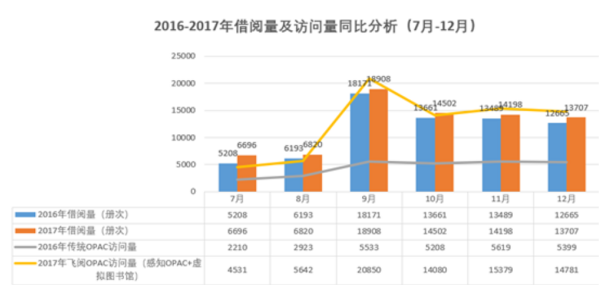1 Introduction
With the development of Internet technology and big data applications in the cloud era, technological progress has also provided good opportunities for the future development of libraries. How to make the library a knowledge center, learning center, and cultural center is still an important goal of the library's future reform and development. The exploration of visual search in the virtual library brings readers a new way of searching. It breaks the traditional library OPAC search method and the linear display of search results, automatically aggregates various data and services in a non-linear way, allows readers to be in the virtual site, and understand the information classification organization and service content at a glance. Can maximize their own information needs. At the same time, it provides a new way of information service for library people to find books and book finding services.
Keywords: virtual library, live data, cloud era, visual search, book search
2. Case implementation background
The library of Shantou University always takes "Reader First, Service and Education" as its purpose. At the beginning of the building, it boldly innovated in traditional services, implemented a full-open large-scale circulation and borrowing service model, and opened a precedent for the comprehensive opening of the borrowing service of domestic university libraries.
For libraries, the service of opening books offline to readers for browsing and borrowing is now universal; for readers, each reader's reading field, knowledge recognition, and retrieval capabilities exist Differences require more online data and information support, and allow readers to discover more quality resources through visual guidance.
Shantou University Library cooperates with Zhejiang Feiyue Cultural and Creative Co., Ltd. to use cloud storage and deployment to pass massive amounts of reader behavior data through cloud computing and analysis to build a new reader cloud service platform for the library to serve more readers in the future , Provide a service space with strong scalability and wide application of live data.
3. Case implementation process
3.1 Service positioning and objects
(1) Book visualization scope
At present, the books in the virtual library are mainly paper books in the open-shelf library, and the order of book arrangement is consistent with the actual placement of offline books. At the same time, it matches the local electronic resources. When the reader retrieves the paper book, it prompts that there is a corresponding electronic resource mark and can be linked to a third-party reading platform.
(2) Display method
Provides readers with graphical information, data information, and classified navigation information in a five-layer structure of floor distribution index map, floor plan, bookshelf, bookshelf level, and book details; at the same time, it combines reader behavior data: clicks, collections, borrowing Waiting for the reader to be in front of the virtual site of the library more intuitively to meet their own information needs to the greatest extent in the shortest time.
Floor classification index map
Floor Plan-Book Search Positioning
Bookshelf diagram-key data exposure in bookshelf
Bookshelf layer-Book data label and summary content introduction
(3) Use object
It is mainly used by readers of our school. Some off-campus readers can also access the library ’s collection resources anytime and anywhere through the Internet. We can promptly receive reminders of new books in the library, recommendations for popular books, etc., and we can collect and subscribe.
3.2 Service content
(1) Visual search
â‘ Each library can customize the weight ratio of the search conditions according to the different requirements of the search results; readers can perform fuzzy search and precise search through any search conditions such as word, title, author, etc., and automatically aggregate various data and services. The layer narrows the search range, improves the search hit rate, and saves time.
②Combining the location information of each book, you can locate the specific shelf information of the target book at any time, such as 15 rows, 3 columns and 2 floors in the west area of ​​2 floors.
â‘¢ Through the graphic information, text information, and classified navigation information of the virtual library floor plan, readers can browse all the collection resources of the library anytime, anywhere.
(2) Push and share customized information
Readers can collect bookshelves and bookshelves in the virtual library according to their own preferences. The latest books in the library are automatically pushed to readers according to the bookshelves and bookshelves classified by the readers.
Classmates and friends can share the entire bookshelf and bookshelf level through WeChat to let more people fall in love with reading.
(3) QR code of offline bookshelf
The bookshelves of the whole library can generate a “bookcase QR code†in the virtual library. After scanning the QR code of the offline bookshelf through the mobile phone, the reader can automatically obtain new books, popular books, recommended books, etc., online data Service offline, enhance reader service experience. As shown below:
Production and implementation of QR code for offline bookshelf
QR code of offline bookshelf-reader usage
(4) Temporary storage, quickly find books
After the reader browses the bookshelf and the bookshelf level, the retrieved books can be put into the temporary bookshelf separately, through the one-click income of the mobile phone, the target books on each floor can be located in batches, saving the readers time to find books offline.
4. Practice effect
The virtual library cloud service was opened to readers of Shantou University Library in early July 2017. The virtual library is a SAAS service product with a high degree of participation by reader users. At present, readers have raised 14 reasonable needs. Based on these needs, corresponding functional services will be upgraded every week, and the reader experience will be greatly improved.
According to the statistics of the virtual library reader service platform, after the virtual library reader service is online, the reader click rate of the virtual library visual search is on the rise when it is perceived that OPAC search and virtual library visual search are both open to readers. The data analysis is shown in the figure:
2017 Shantou University Library
Readers of the whole library: 14460 people, including 10975 undergraduate readers
Annual borrowing volume of the whole library: 117807 copies; annual borrowing volume of undergraduates: 73704 copies
Annual library borrowings per capita: 8.1 volumes; Annual undergraduate borrowings: 6.7 volumes
Due to the continuous iterative upgrade of the functions of the virtual library, combined with the above data, it is expected that in 2018, the library will have 8.5 books per capita and undergraduate students will have 7.0 books per capita.
5 Conclusion
Virtual library is a SAAS service application platform with high participation of readers and users. Among them, data services and cloud computing services are based on Alibaba Cloud facilities. Being aware of the launch of OPAC and the virtual library makes the user search experience more complete and the search results more accurate. According to the statistics of the background data, the number of OPAC visits of books in the whole library has increased significantly, the number of borrowing has increased, and the number of users using virtual libraries has also increased significantly.
In addition to providing data services for readers, the virtual library will do more application function enhancements in the future. The current functions are as follows:
(1) Accurate line navigation according to book positioning to help readers quickly find their bookshelves.
(2) Massive reader behavior data, click stream data collection and storage, to create online virtual boutique libraries of various colleges, new book shelves in the virtual library, virtual theme / thematic bookshelves, virtual learning exchange space and knowledge sharing space.
(3) Auxiliary management application of shelf arrangement for library collections, which assists librarians to unload, order, and reverse books.
(4) The floor plan uses 3D modeling technology and VR technology to make the reader's visual experience better.







Side Cabinet,modern side cabinet,sideboard,minimalist side cabinet
Foshan Poesy Furniture Co., LTD. , https://www.poesy-furniture.com
